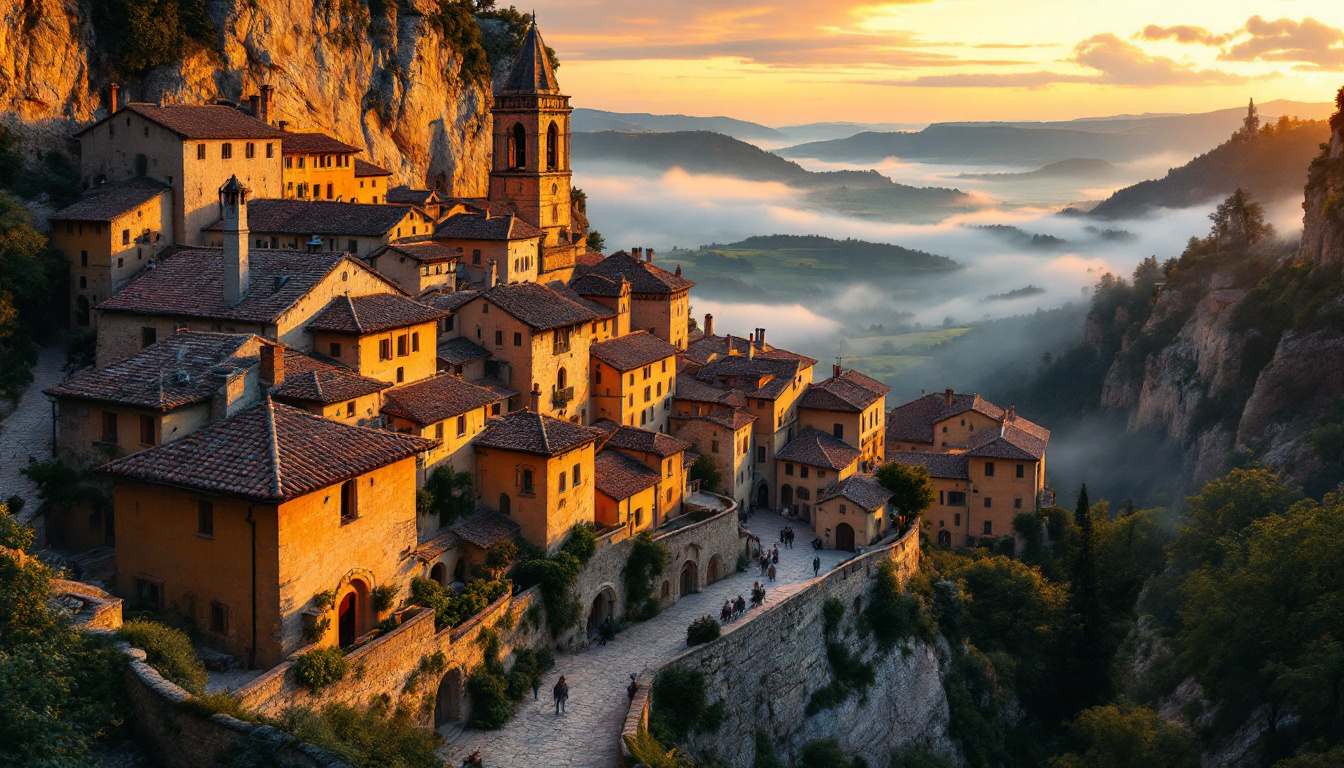Hidden in southwestern France lies a medieval treasure that seems plucked from a fairy tale. Perched dramatically atop a 180-meter limestone plateau, Pujols-le-Haut commands breathtaking panoramic views across the Lot Valley. This fortified village, officially recognized as one of “Les Plus Beaux Villages de France” since 1995, offers visitors a journey back in time that few travelers ever discover.
A medieval gem suspended in time
Walking through Pujols-le-Haut’s narrow cobblestone streets feels like stepping through a portal to medieval France. Honey-colored stone buildings with their characteristic red-tiled roofs create a harmonious tableau that has remained largely unchanged for centuries. The village’s strategic position made it a coveted stronghold during the turbulent Middle Ages, with ramparts that once protected its inhabitants from invaders.
Unlike the increasingly tourist-heavy villages of Provence, Pujols-le-Haut maintains an authentic atmosphere where local life continues at its traditional unhurried pace.
The architectural wonders hiding in plain sight
The 13th-century Church of Saint-Nicolas stands as the village’s crowning architectural achievement. Its most fascinating feature? A unique passage beneath the bell tower that serves as an atmospheric gateway into the old town center.
“The church passage creates a threshold experience – you physically transition between the modern world and medieval Pujols,” explains local historian Marie Dupont. “Few visitors realize they’re walking through one of the most significant architectural features in the village.”
Nearby, the ruins of the original collegiate church offer silent testimony to Pujols-le-Haut’s former ecclesiastical importance, while remnants of the ancient castle foundations reward explorers who venture to the western edge of the plateau.
A culinary journey through southwestern France
Sunday mornings transform the tranquil village into a vibrant marketplace. From April through September, Place de la Halle buzzes with vendors displaying the bounty of the region. Local farmers proudly offer duck confit, foie gras, prunes, hazelnuts, artisanal cheeses, and handcrafted chocolates that showcase the gastronomic heritage of Lot-et-Garonne.
The summer gourmet market deserves special attention. As dusk falls, visitors gather to sample regional delicacies while watching the sunset paint the valley in spectacular shades of gold and purple.
Where to stay and dine like a local
For accommodations, the charming A la Grande Maison offers intimate lodging with personalized service, while Les Gues Rivieres provides a comfortable base for exploring the region. Both capture the village’s historic character while providing modern comforts.
When hunger strikes, Le Maka stands out among local eateries with its commitment to organic, locally-sourced ingredients and vegetarian-friendly options. The cozy atmosphere and innovative takes on regional classics have earned it a devoted following among both locals and visitors.
“Our philosophy is simple – we let the seasonal products of our region speak for themselves,” says Chef Laurent Besson of Le Maka. “The land around Pujols-le-Haut is incredibly fertile, so our menu changes with what our local farmers bring us each day.”
The perfect time to discover Pujols-le-Haut
While summer brings warm weather and lively markets, budget travelers should consider visiting between September and November. During these months, accommodation prices drop significantly, and the village returns to its peaceful rhythm while still offering pleasant temperatures for exploration.
Unlike more famous rock-carved settlements or Renaissance engineering marvels that draw crowds, Pujols-le-Haut offers a rare opportunity to experience medieval France without the tourist throngs.
As with less-discovered islands that offer amazing natural wonders, this hilltop village delivers authentic experiences without Instagram-driven crowds. Its timeless beauty, rich history (rivaling even Britain’s legendary Arthurian sites), and genuine French village life create memories that linger long after departure.
In Pujols-le-Haut, the medieval past doesn’t feel distant – it envelops you, whispers stories through ancient stone, and reminds us that sometimes the most extraordinary places are those waiting quietly to be discovered.
